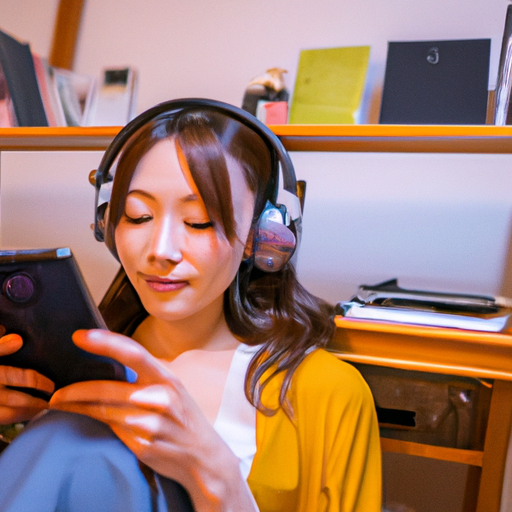What is the Market Prospect of Late-Night Radio Sleep-Specific Audio?
I. Introduction
In an age where sleep deprivation has become a common affliction, late-night radio sleep-specific audio is emerging as a unique solution to help individuals unwind and drift into a peaceful slumber. This genre of audio content encompasses soothing sounds, calming narratives, and guided meditations designed specifically for nighttime listening. As society increasingly recognizes the importance of sleep for overall health and well-being, the demand for sleep-related content is on the rise. This blog post will explore the market prospects of late-night radio sleep-specific audio, examining the factors driving its growth and the opportunities it presents for content creators and marketers alike.
II. The Sleep Crisis: An Overview
Sleep deprivation is a pressing issue in modern society, with studies indicating that nearly one-third of adults do not get the recommended seven hours of sleep per night. The consequences of poor sleep quality extend beyond mere fatigue; they can lead to serious health problems, including obesity, diabetes, cardiovascular disease, and mental health disorders. The prevalence of sleep disorders, such as insomnia and sleep apnea, is also on the rise, affecting millions of individuals worldwide. The societal impact of these issues is profound, as sleep-deprived individuals often experience decreased productivity, impaired cognitive function, and strained relationships. As awareness of the sleep crisis grows, so does the interest in solutions that can help individuals achieve better sleep quality.
III. The Evolution of Audio Content
The landscape of audio content has evolved significantly over the years. From the early days of radio broadcasting to the rise of digital platforms, audio entertainment has adapted to meet the changing needs of consumers. The advent of streaming services and podcasts has revolutionized how people consume audio, allowing for greater accessibility and personalization. Within this context, sleep-specific audio content has emerged as a niche market, catering to individuals seeking relaxation and restfulness. This evolution reflects a broader trend toward wellness and self-care, with consumers increasingly turning to audio as a tool for improving their mental and physical health.
IV. Market Analysis
A. Current Market Trends in Audio Content Consumption
The audio content market is experiencing significant growth, driven by the popularity of podcasts and streaming services. According to recent statistics, podcast listenership has surged, with millions of people tuning in to various genres, including health and wellness. Additionally, sleep-related apps and audio content have gained traction, with users seeking effective ways to enhance their sleep experience. This trend indicates a growing acceptance of audio as a medium for relaxation and sleep improvement.
B. Target Demographics for Sleep-Specific Audio
Understanding the target demographics for sleep-specific audio is crucial for market success. Research shows that younger audiences, particularly millennials and Gen Z, are more likely to engage with sleep audio content. These age groups often seek innovative solutions to combat stress and anxiety, making them prime candidates for sleep-specific offerings. Geographic trends also play a role, with urban areas experiencing higher demand for sleep audio due to the fast-paced lifestyle and increased stress levels.
C. Competitive Landscape
The competitive landscape for sleep-specific audio is diverse, with various players vying for market share. Key players include established streaming platforms, dedicated sleep apps, and independent content creators. Each provider offers unique selling propositions, such as exclusive content, personalized recommendations, and user-friendly interfaces. As competition intensifies, differentiation will be essential for success in this burgeoning market.
V. Consumer Behavior and Preferences
A. Factors Influencing the Choice of Sleep Audio
When it comes to selecting sleep audio, consumers consider several factors. Content type is a significant determinant, with many individuals preferring soothing music, calming stories, or guided meditations. The length and format of the audio also play a role, as listeners often seek content that aligns with their bedtime routines. Understanding these preferences can help content creators tailor their offerings to meet consumer needs effectively.
B. The Role of Personalization in Enhancing User Experience
Personalization is a key trend in the audio market, and it holds particular importance for sleep-specific content. Consumers are increasingly drawn to platforms that offer customized recommendations based on their listening habits and preferences. By leveraging data analytics and user feedback, content providers can create a more engaging and satisfying experience for their audience.
C. Feedback and Reviews from Consumers
Consumer feedback is invaluable in shaping the future of sleep-specific audio. Reviews and testimonials can provide insights into what works and what doesn’t, helping creators refine their content. Positive experiences can lead to word-of-mouth recommendations, further driving interest in sleep audio offerings.
VI. Technological Innovations
A. Advances in Audio Technology and Their Impact on Sleep Audio
Technological advancements have significantly influenced the development of sleep-specific audio. High-quality sound production, noise-canceling features, and immersive audio experiences enhance the effectiveness of sleep audio content. As technology continues to evolve, so too will the possibilities for creating engaging and soothing audio experiences.
B. Integration of AI and Machine Learning in Content Curation
Artificial intelligence (AI) and machine learning are transforming how audio content is curated and delivered. These technologies can analyze user behavior and preferences, enabling platforms to recommend personalized sleep audio that aligns with individual needs. This level of customization enhances user satisfaction and encourages continued engagement with sleep-specific content.
C. The Role of Smart Devices and Wearables in Sleep Tracking and Audio Delivery
The rise of smart devices and wearables has further integrated sleep audio into consumers' lives. Many individuals now use sleep trackers to monitor their sleep patterns, and these devices can seamlessly connect to audio platforms to deliver tailored content. This integration creates a holistic approach to sleep improvement, combining data-driven insights with soothing audio experiences.
VII. Marketing Strategies for Sleep-Specific Audio
A. Effective Channels for Reaching Target Audiences
To effectively market sleep-specific audio, content creators must identify the most effective channels for reaching their target audiences. Social media platforms, podcasts, and wellness blogs can serve as valuable avenues for promotion. Engaging content that resonates with consumers' sleep-related challenges can help build brand awareness and attract new listeners.
B. Collaborations with Sleep Experts and Influencers
Collaborating with sleep experts and influencers can enhance credibility and reach within the sleep audio market. By partnering with professionals in the field, content creators can provide valuable insights and recommendations, positioning themselves as trusted sources of sleep-related information.
C. Utilizing Social Media and Content Marketing
Social media and content marketing are powerful tools for promoting sleep-specific audio. Engaging posts, informative articles, and interactive content can capture the attention of potential listeners and encourage them to explore sleep audio offerings. Building a community around sleep wellness can foster loyalty and encourage ongoing engagement.
VIII. Challenges and Considerations
A. Regulatory and Ethical Considerations in Sleep Audio Content
As the market for sleep-specific audio grows, regulatory and ethical considerations must be addressed. Content creators should ensure that their offerings are safe and effective, avoiding any misleading claims about the benefits of sleep audio. Transparency and accountability will be essential in building trust with consumers.
B. Competition from Other Forms of Entertainment
The sleep audio market faces competition from various forms of entertainment, including traditional music, audiobooks, and streaming services. To stand out, sleep audio providers must emphasize the unique benefits of their content and create a compelling value proposition for consumers.
C. Addressing Skepticism About the Effectiveness of Sleep Audio
Despite the growing popularity of sleep audio, some consumers may remain skeptical about its effectiveness. Addressing these concerns through research-backed claims and testimonials can help build credibility and encourage more individuals to explore sleep-specific audio as a viable solution for improving sleep quality.
IX. Future Prospects
A. Predictions for the Growth of the Sleep-Specific Audio Market
The future of the sleep-specific audio market looks promising, with predictions indicating continued growth in the coming years. As awareness of sleep health increases and more individuals seek effective solutions for sleep improvement, the demand for sleep audio content is likely to rise.
B. Potential for Innovation and New Content Formats
Innovation will play a crucial role in shaping the future of sleep-specific audio. Content creators can explore new formats, such as interactive audio experiences or immersive storytelling, to engage listeners in novel ways. The integration of virtual reality (VR) and augmented reality (AR) may also open up exciting possibilities for enhancing the sleep audio experience.
C. The Role of Research in Shaping Future Offerings
Ongoing research into sleep health and audio's impact on sleep quality will inform the development of future sleep-specific audio offerings. By staying informed about the latest findings, content creators can ensure that their offerings align with best practices and meet the evolving needs of consumers.
X. Conclusion
In conclusion, the market prospect for late-night radio sleep-specific audio is bright, driven by a growing awareness of the importance of sleep and the increasing demand for effective solutions. As consumers seek ways to improve their sleep quality, sleep audio content presents a unique opportunity for content creators and marketers. By understanding consumer preferences, leveraging technological innovations, and implementing effective marketing strategies, stakeholders in the audio and wellness industries can capitalize on this burgeoning market. Addressing sleep issues through audio content not only benefits individuals seeking better rest but also contributes to a healthier, more productive society. The time is ripe for investment and innovation in the realm of sleep-specific audio, and the potential rewards are significant.






